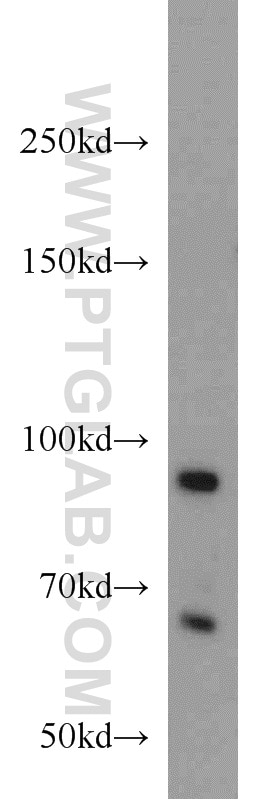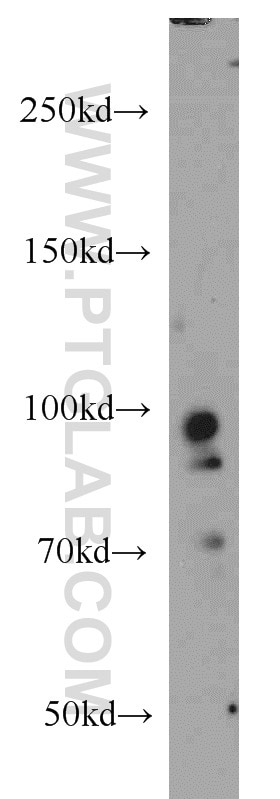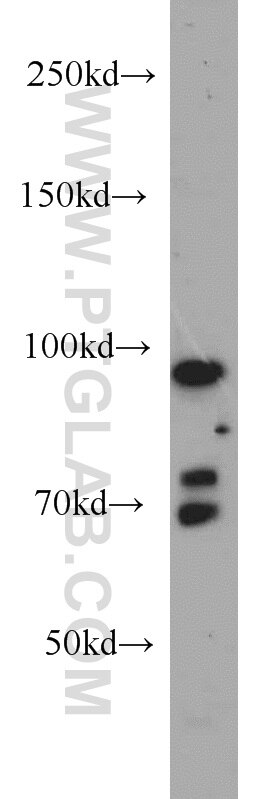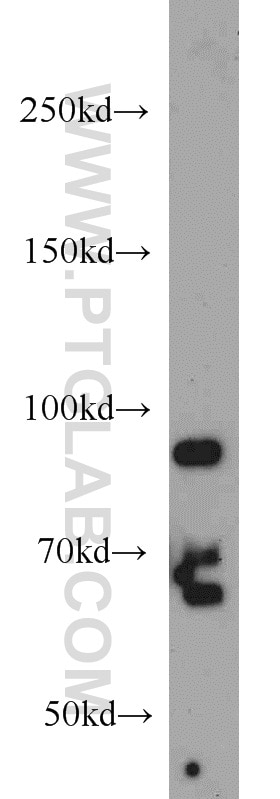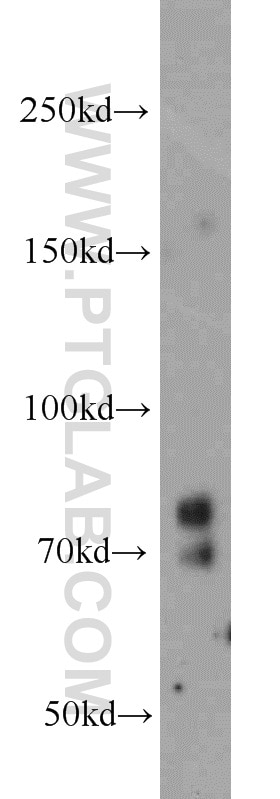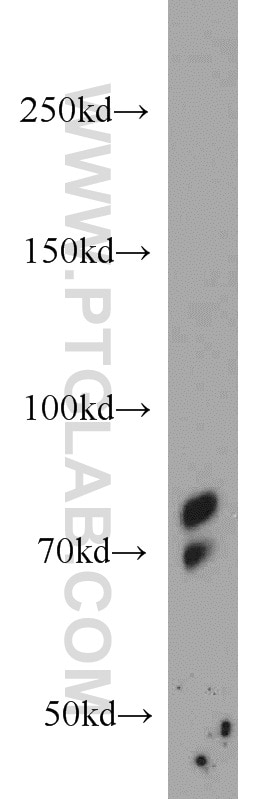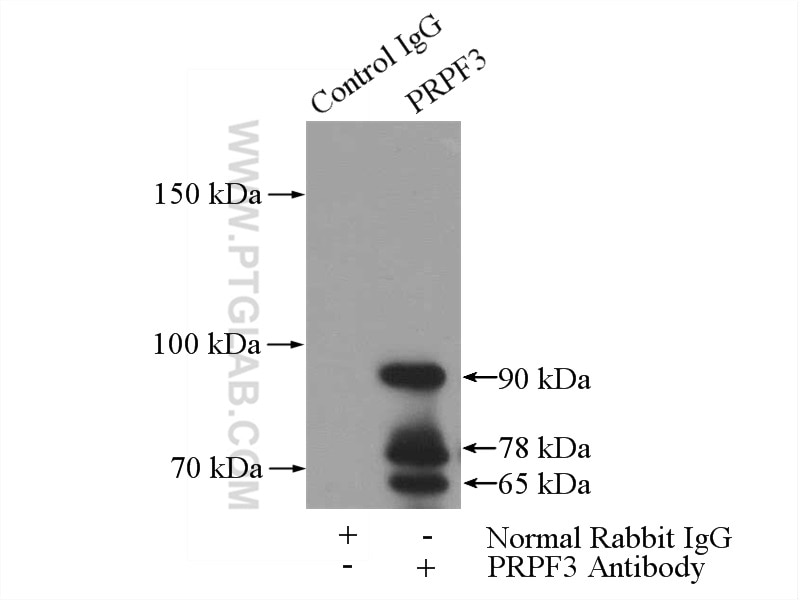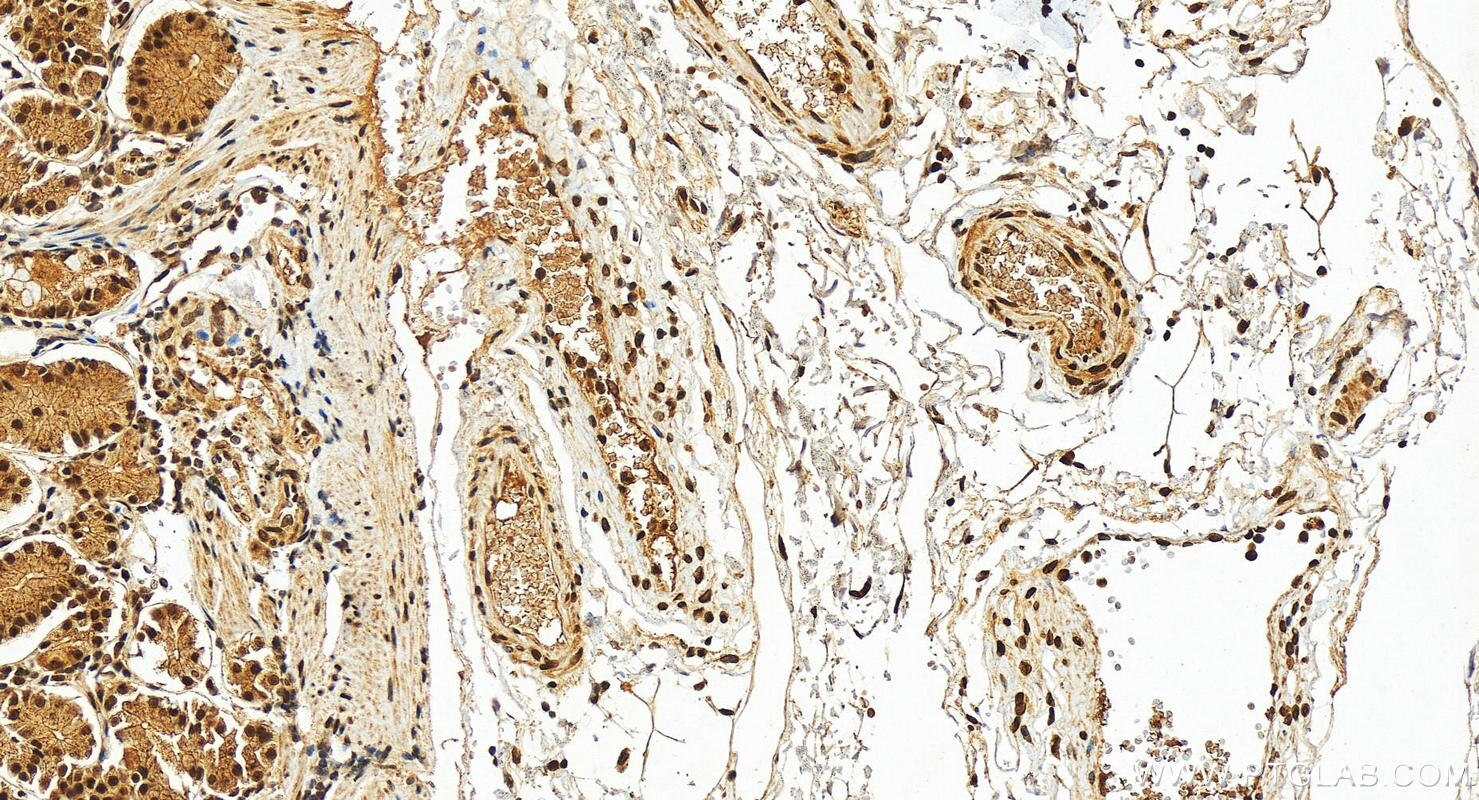Tested Applications
| Positive WB detected in | Y79 cells, HepG2 cells, L02 cells, mouse brain tissue, mouse liver tissue |
| Positive IP detected in | mouse liver tissue |
| Positive IHC detected in | human stomach tissue Note: suggested antigen retrieval with TE buffer pH 9.0; (*) Alternatively, antigen retrieval may be performed with citrate buffer pH 6.0 |
Recommended dilution
| Application | Dilution |
|---|---|
| Western Blot (WB) | WB : 1:500-1:2000 |
| Immunoprecipitation (IP) | IP : 0.5-4.0 ug for 1.0-3.0 mg of total protein lysate |
| Immunohistochemistry (IHC) | IHC : 1:50-1:500 |
| It is recommended that this reagent should be titrated in each testing system to obtain optimal results. | |
| Sample-dependent, Check data in validation data gallery. | |
Published Applications
| WB | See 4 publications below |
| IF | See 1 publications below |
Product Information
10106-1-AP targets PRPF3 in WB, IHC, IF, IP, ELISA applications and shows reactivity with human, mouse, rat samples.
| Tested Reactivity | human, mouse, rat |
| Cited Reactivity | human, mouse |
| Host / Isotype | Rabbit / IgG |
| Class | Polyclonal |
| Type | Antibody |
| Immunogen | PRPF3 fusion protein Ag0154 Predict reactive species |
| Full Name | PRP3 pre-mRNA processing factor 3 homolog (S. cerevisiae) |
| Calculated Molecular Weight | 78 kDa |
| Observed Molecular Weight | 90 kDa, 78 kDa |
| GenBank Accession Number | BC000184 |
| Gene Symbol | PRPF3 |
| Gene ID (NCBI) | 9129 |
| RRID | AB_2170994 |
| Conjugate | Unconjugated |
| Form | Liquid |
| Purification Method | Antigen affinity purification |
| UNIPROT ID | O43395 |
| Storage Buffer | PBS with 0.02% sodium azide and 50% glycerol , pH 7.3 |
| Storage Conditions | Store at -20°C. Stable for one year after shipment. Aliquoting is unnecessary for -20oC storage. 20ul sizes contain 0.1% BSA. |
Background Information
The pre-mRNA splicing occurs in spliceosomes, which consist of four ribonucleoprotein (snRNP) particles (U1, U2, U5 and U4/U6) and more than fifty proteins. This U4/U6-associated splicing factor, Hprp3p, is a 77 kDa protein, which is homologous to the Saccharomyces cerevisiae splicing factor Prp3p and may play a role in spliceosome assembly. Western blot analysis of HeLa cell nuclear extracts detected PRP3 protein at an apparent molecular mass of about 90 kD(PMID: 9328476 ). The discrepancy between the molecular mass reported here and that predicted from the Hprp3p coding sequence can be attributed, at least partially, to the highly positive charge; its value of predicted isoelectric point (IP) is ∼9.99. This antibody is a rabbit polyclonal antibody raised against an internal region of human PRPF3. A predicted molecular mass of 77 kDa and the gene is named PRPF3 because it is homologous to the yeast PRP3 gene. We noticed that although the predicted molecular mass of PRPF3 is77 kDa, the protein produced in E.coli migrated like a 90 kDa protein in SDS-PAGE. (PMID: 9328476)
Protocols
| Product Specific Protocols | |
|---|---|
| WB protocol for PRPF3 antibody 10106-1-AP | Download protocol |
| IHC protocol for PRPF3 antibody 10106-1-AP | Download protocol |
| IP protocol for PRPF3 antibody 10106-1-AP | Download protocol |
| Standard Protocols | |
|---|---|
| Click here to view our Standard Protocols |
Publications
| Species | Application | Title |
|---|---|---|
Hum Mol Genet PRPF mutations are associated with generalized defects in spliceosome formation and pre-mRNA splicing in patients with retinitis pigmentosa. | ||
Mol Cell Biol A quantitative high-throughput in vitro splicing assay identifies inhibitors of spliceosome catalysis. | ||
J Biol Chem PRPF19 regulates p53-dependent cellular senescence by modulating alternative splicing of MDM4 mRNA. | ||
Cell Mol Biol Lett TMEM43 promotes pancreatic cancer progression by stabilizing PRPF3 and regulating RAP2B/ERK axis. | ||
Food Funct Flaxseed oil attenuates PFOS-induced testicular damage by regulating RNA alternative splicing |
